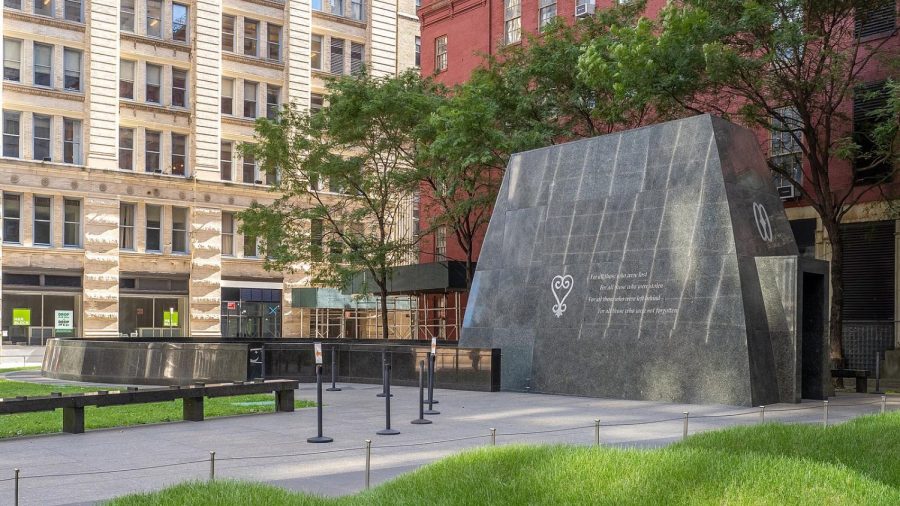African American history museum will bring awareness to the Black struggle
March 13, 2023
Congressman Dan Goldman introduced a bill on Feb. 27 to build a museum, research and education center on the site of a massive African burial ground in Lower Manhattan.
The museum will be dedicated to commemorating Black New Yorkers’ historical plight, which will hopefully raise awareness and contribute to the efforts made to find solutions for the various systemic problems that Black Americans face today.
A project of this caliber is especially relevant now because of recent turmoil surrounding the discussion of race in schools, with conservative politicians resisting the inclusion of Black viewpoints on history.
ABC News reported a flare-up in February, also known as Black History Month, of conservative backlash to school lessons that teachers conducted on Black contributions to America’s history.
In Florida, educators face the possibility of a third-degree felony under state law if they violate the statute which says they can’t have, “Any book, pamphlet, magazine or printed matter that contains explicit and detailed descriptions or narrative accounts of sexual excitement, or sexual conduct that is harmful to minors.”
Some educators worry books that touch upon race might soon fall under the category of “explicit” as well.
A study by the Legal Defense Fund found that over 566 books are already banned from Florida schools, some of which contained material related to gender identity, sexual orientation and race.
Popular books that are now banned include The Hate U Give by Angie Thomas, which was released as a movie in 2018 and quickly rose in popularity for its honest portrayal of police brutality.
The Bluest Eye by Toni Morrison, which speaks on the harmful beauty standards often internalized by young, Black girls, has also been taken off of classroom shelves.
It is damaging to society to restrict books that discuss injustices that marginalized groups endure. These conversations are ultimately necessary to foster collective growth.
Another hotly debated topic is the teaching of critical race theory, a framework of legal analysis based on the premise of race, which conservatives often fault for painting Black people as “victims.”
But the purpose of critical race theory is to highlight American systems that cause people of color to face systematic oppression in their daily lives. It is a means of uplifting the Black community through educating the public, not diminishing it.
The framework for critical race theory was developed by many civil rights activists who sought to hold systems accountable for their mistreatment of Black individuals.
Derrick Bell, a lawyer and activist, was one of the pioneers for CRT where he argued that racism was ingrained into American systems through governmental policies that uplifted oppression.
A museum that can accurately tell the stories of what the Black community has endured will teach the newer generation important lessons about the past and how to learn from it.
Moreover, other than a school center, one of the best places to teach is through a museum where everyone, young or old, is welcome to visit.
“Black history is American history, which is why now more than ever, as Black history comes under attack from extreme conservatives who would like to whitewash the history of our nation, we must work to uplift that history,” Goldman said.
Furthermore, the establishment of a museum on the sacred ground will serve to recognize Black laborer’s contributions to the country. Excavators found the remains of 20,000 enslaved Africans in the burial site where the museum will be constructed.
According to the bill, “[The Museum] will reflect the significance of the African Burial Ground and help the people of the United States understand the past and honor the history of all people in the United States.”







